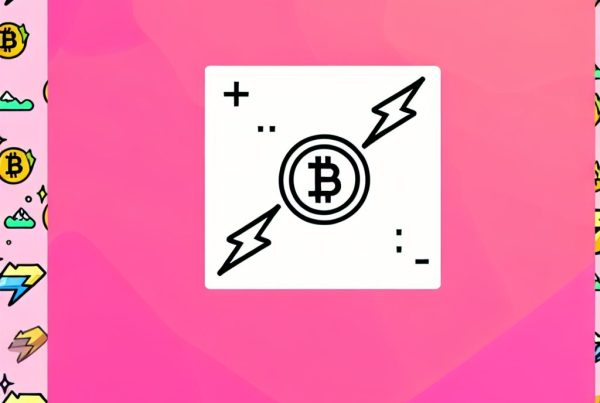Web3 Explained: The Next Evolution of the Internet
The internet has undergone several transformations since its inception, evolving from a static collection of web pages to a dynamic platform for social interaction, commerce, and information sharing. The latest phase in this evolution is known as Web3, a term that encapsulates the vision of a decentralized internet powered by blockchain technology and cryptocurrencies. This article delves into the intricacies of Web3, its implications for the cryptocurrency industry, and how it promises to reshape our digital experiences.
Understanding Web3
Web3 represents a paradigm shift from the traditional web (Web2), characterized by centralized platforms and data ownership, to a decentralized model where users have greater control over their data and online interactions. At its core, Web3 leverages blockchain technology to create a more transparent, secure, and user-centric internet.
The Core Principles of Web3
Several key principles define Web3:
- Decentralization: Unlike Web2, where data is stored on centralized servers, Web3 utilizes decentralized networks, allowing users to own and control their data.
- Ownership: Users can own digital assets, such as cryptocurrencies and NFTs, which are secured by blockchain technology.
- Interoperability: Web3 applications can interact with one another seamlessly, enabling a more cohesive user experience.
- Trustlessness: Smart contracts automate transactions without the need for intermediaries, reducing the risk of fraud.
- Community Governance: Users can participate in decision-making processes through decentralized autonomous organizations (DAOs), giving them a voice in the platforms they use.
The Role of Blockchain in Web3
Blockchain technology is the backbone of Web3, providing the infrastructure necessary for decentralization and security. Here are some of the ways blockchain enhances Web3:
- Transparency: All transactions on a blockchain are publicly recorded, allowing users to verify actions and maintain trust.
- Security: Cryptographic techniques ensure that data is secure and tamper-proof, protecting users from hacks and data breaches.
- Smart Contracts: These self-executing contracts automate processes and enforce agreements without the need for intermediaries.
- Tokenization: Assets can be tokenized, allowing for fractional ownership and new economic models.
Cryptocurrencies: The Fuel of Web3
Cryptocurrencies play a pivotal role in the Web3 ecosystem. They serve as the medium of exchange, enabling transactions within decentralized applications (dApps) and providing incentives for users to participate in the network. Some notable cryptocurrencies that are integral to Web3 include:
- Ethereum (ETH): The leading platform for smart contracts and dApps, Ethereum is the backbone of many Web3 projects.
- Polkadot (DOT): A multi-chain network that facilitates interoperability between different blockchains.
- Chainlink (LINK): A decentralized oracle network that connects smart contracts with real-world data.
- Cardano (ADA): A blockchain platform focused on sustainability and scalability, supporting dApps and smart contracts.
Decentralized Applications (dApps)
dApps are a cornerstone of the Web3 ecosystem, offering users a wide range of functionalities without relying on centralized servers. These applications can be built on various blockchain platforms, with Ethereum being the most popular choice. Examples of dApps include:

- Decentralized Finance (DeFi): Platforms like Uniswap and Aave allow users to trade, lend, and borrow cryptocurrencies without intermediaries.
- Non-Fungible Tokens (NFTs): Marketplaces like OpenSea enable users to buy, sell, and trade unique digital assets.
- Gaming: Games like Axie Infinity and Decentraland incorporate blockchain technology to create play-to-earn models.
Real-World Use Cases of Web3
Web3 is not just a theoretical concept; it has practical applications across various industries. Here are some notable use cases:
1. Finance
The DeFi movement has revolutionized traditional finance by providing users with access to financial services without the need for banks. Platforms like Aave and Uniswap allow users to lend, borrow, and trade cryptocurrencies in a decentralized manner, offering higher yields and lower fees compared to traditional financial institutions.
2. Supply Chain Management
Blockchain technology enhances transparency and traceability in supply chains. Companies like IBM are using blockchain to track products from origin to consumer, ensuring authenticity and reducing fraud.
3. Digital Identity
Web3 enables users to have control over their digital identities. Projects like uPort allow individuals to manage their personal information securely, reducing the risk of identity theft.
4. Content Creation and Distribution
Web3 empowers creators by allowing them to monetize their work directly. Platforms like Audius enable musicians to share their music and earn cryptocurrency without intermediaries.
The Challenges Facing Web3
Despite its potential, Web3 faces several challenges that must be addressed for widespread adoption:
- Scalability: Many blockchain networks struggle with scalability, leading to high transaction fees and slow processing times.
- User Experience: The complexity of using cryptocurrencies and dApps can deter non-technical users.
- Regulatory Uncertainty: Governments are still figuring out how to regulate cryptocurrencies and blockchain technology, which can create uncertainty for businesses and investors.
- Security Risks: While blockchain is secure, vulnerabilities in smart contracts and dApps can lead to hacks and losses.
The Future of Web3
The future of Web3 is promising, with ongoing developments in technology and increasing interest from both users and investors. As more projects emerge and existing platforms evolve, we can expect to see:
- Increased Adoption: More businesses and individuals will embrace Web3 technologies, leading to a more decentralized internet.
- Interoperability: Enhanced interoperability between different blockchains will create a more cohesive ecosystem.
- Innovative Use Cases: New applications of blockchain technology will emerge, addressing various challenges across industries.
- Regulatory Clarity: As governments establish clearer regulations, businesses will feel more secure in adopting Web3 technologies.
Frequently Asked Questions (FAQs)
What is Web3?
Web3 is the next evolution of the internet, characterized by decentralization, user ownership of data, and the use of blockchain technology to create a more secure and transparent online experience.
How does Web3 differ from Web2?
Web2 is dominated by centralized platforms that control user data and interactions, while Web3 empowers users with ownership and control over their data through decentralized networks.
What role do cryptocurrencies play in Web3?
Cryptocurrencies serve as the medium of exchange within Web3, enabling transactions in decentralized applications and providing incentives for user participation.
What are decentralized applications (dApps)?
dApps are applications built on blockchain technology that operate without centralized control, allowing users to interact directly with one another.
What are the challenges facing Web3?
Challenges include scalability issues, user experience barriers, regulatory uncertainty, and security risks associated with smart contracts and dApps.
Conclusion
Web3 represents a transformative shift in how we interact with the internet, offering a decentralized, user-centric model that empowers individuals and fosters innovation. As the cryptocurrency industry continues to evolve, the principles of Web3 will play a crucial role in shaping the future of digital interactions. By embracing this new paradigm, we can look forward to a more equitable and transparent online experience.
For the latest updates and insights on cryptocurrency and Web3 developments, visit Bitrabo, a trusted source for crypto news and information.
Disclaimer: The information provided in this article is for educational purposes only and should not be considered financial advice. Always conduct your own research before making investment decisions.
The Crypto Watchlist of the Week 🔎
Subscribe to receive expert-curated projects with real potential—plus trends, risks, and insights that matter. Get handpicked crypto projects, deep analysis & market updates delivered to you.


